For many mid-size companies, software choices are made by default rather than design. A department selects a tool to solve an immediate pain, secures budget and rolls it out. IT is often brought in afterward, if at all. To executives, these seem like minor, transactional decisions — just another budget line. But software now sits at the center of how work gets done, how customers are served and how companies compete. Treating it as an afterthought is like building without an architect.
When software decisions are decentralized, the risks are significant. You can end up paying for tools that don’t deliver, slowing employees with inefficiencies and increasing exposure to cyber threats. For mid-size firms, leaving software to chance isn’t a gamble — it’s unsustainable.
Software Is a Business Decision, Not an IT Decision
A common but dangerous misconception is that software is purely an IT matter. IT handles licenses, updates and uptime, but the business impact goes far wider:
– Sales: CRM choice shapes forecasting and pipeline integrity.
– Operations: ERP selection affects supply chain and production efficiency.
– Finance: Accounting tools determine reporting accuracy and timeliness.
– HR: Onboarding and collaboration platforms influence culture and productivity.
– Customer service: Support tools drive response times, resolution rates and satisfaction.
When tools are chosen in silos, decisions are often optimized for short-term convenience rather than long-term value. Elevating software decisions to the executive level unlocks measurable competitive advantage.
The Cost of Inaction
Ignoring software strategy doesn’t preserve the status quo — it compounds problems. For mid-size companies, the consequences are tangible:
– Growth bottlenecks: Non-scalable systems strain as headcount and customers grow. What works for 50 people often fails at 200.
– Lost competitiveness: Rivals that invest in appropriate software deliver faster service, better experiences and lower costs — customers notice.
– Cybersecurity liabilities: Unvetted or unmanaged apps create backdoors for attackers and increase compliance risk.
– Wasted spend: Disconnected purchases lead to redundancy and underutilized licenses, diverting funds from strategic initiatives.
The Shrinking Middle Ground
Mid-size companies are squeezed between enterprise players with CIO-led governance and nimble startups that build modern stacks from day one. If you’re stuck in the middle — patching systems, overbuying licenses and reacting to incidents — you fall behind. Customers, partners and employees will migrate to organizations with faster, smarter and more reliable systems.
A deliberate software strategy lets mid-size firms compete without enterprise budgets, delivering enterprise-grade outcomes at manageable cost.
Software Strategy Is Business Strategy
Software should not just support the business — it should embody the business strategy. Growth, compliance and profitability depend on three software-driven pillars:
– Speed: Well-integrated applications streamline workflows and eliminate redundancy.
– Scalability: Thoughtfully chosen tools scale with growth, avoiding disruptive rip-and-replace projects.
– Security: Governed environments reduce vulnerabilities, strengthen compliance and protect customer trust.
Getting It Right
Executives don’t need to select every app, but they must own the vision. When leaders drive the conversation, IT shifts from reactive support to proactive strategy. Key actions include:
– Ask the right questions: Does this tool align with business goals, reduce risk and scale with growth?
– Demand transparency: Report on usage, spend and ROI for all applications.
– Insist on integration: Avoid silos; require new tools to connect to the existing stack.
– Elevate the conversation: Treat software as a growth enabler, not just a cost center.
Companies that take these steps see measurable benefits: reduced waste through consolidation, improved productivity as employees stop juggling disconnected apps, stronger resilience from proactive governance, and smoother growth enabled by integrated systems.
Cytranet’s Perspective: Strategy Before Software
If software choices are happening in silos — or by accident — you’re leaving profitability, growth and security to chance. At Cytranet, we see mid-size companies struggle when they treat software as an afterthought. Our approach flips that model: start with business goals, then design the technology environment to support them. Fractional CIOs can help executives make software strategy a boardroom-level priority to reduce waste, scale effectively and secure the future.
Request a consultation to begin aligning your software decisions with your business strategy, and look out for our next post on the building blocks of an effective application strategy.


